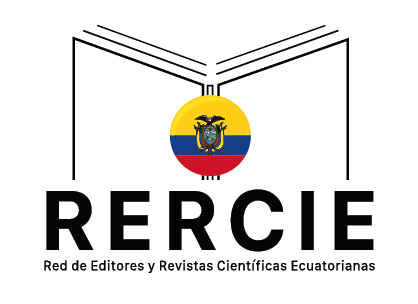La distanasia en el Estado constitucional ecuatoriano como fórmula para el tratamiento de enfermedades catastróficas
DOI:
https://doi.org/10.36097/rsan.v1i59.3195Palabras clave:
Distanasia , enfermedades catastróficas, estado constitucional de derechos y justicia, vida dignaResumen
La vida es un bien jurídico de especial protección, de tal forma que, todo aquello que atente contra este derecho debe ser objeto de sanción. Así, la protección, preservación y prolongación de la vida es el eje axiomático que cristaliza los derechos del “Buen Vivir”. La investigación tiene como objetivo determinar el amparo de la práctica de la distanasia como fórmula para el tratamiento de las enfermedades catastróficas frente al reconocimiento del derecho a la vida digna en el Estado constitucional. Esta investigación de carácter jurídico-doctrinal se desarrolló bajo el enfoque cualitativo, sistematizando el acervo bibliográfico colectado a través de la técnica del árbol de problemas y el uso del método exegético. Los resultados permiten reconocer que, la vida es un bien jurídico de superlativo valor, no obstante, la vida y la muerte son dos aspectos que confluyen bajo el desiderátum constitucional de los derechos del “Buen Vivir”. Por esta razón, su protección debe estar equilibrada con prácticas que, maximicen, hasta donde sea humanamente necesaria su preservación. Se concluye que, el Estado debe asumir criterios de carácter científico, racional y moral que guíen las decisiones de política pública sobre esta materia sin afectar el valor de la dignidad humana.
Descargas
Referencias
Alexy, R. (2009). Teoría de los Derechos Fundamentales (3ra. Ed.). Centro de Estudios Constitucionales. https://www.pensamientopenal.com.ar/system/files/2014/12/doctrina37294.pdf
Altisent, J., Porta, R., Rodeles, A., Gisbert, P., Loncan, D., Muñoz, A., ... & Sanz, J. (2002). Declaración sobre la eutanasia de la Sociedad Española de Cuidados Paliativos. Declaración sobre la eutanasia de la sociedad Española de cuidados paliativos, 9(1), 37-40. https://produccioncientifica.ucm.es/documentos/61fa8959565bff40e6e7a5bc
Alves, A., & Freitas, M. (2018). Prácticas de ortotanasia y cuidados paliativos en pacientes con cáncer terminal: una revisión sistemática de la literatura. EnfermGlob, 17(3), 529-544. http://doi.org/10.6018/eglobal.17.3.299691.
Arruda, M., & Manchola, C. (2021). Bioética, cuidados paliativos y liberación: una contribución al “buen morir”. Revista bioética, 29 (2), 268-78. https://doi.org/10.1590/1983-
Asociación Médica Mundial [AMM]. (1948). Declaración de Ginebra de la Asociación Médica Mundial. https://saib.es/declaracion-de-ginebra-de-la-amm-reciente-version-de-chicago/?pdf=2489.
Barreto, D. (2018). Reflexiones sobre la muerte. Anales de la Universidad Central del Ecuador, 1(376), 333-341. https://revistadigital.uce.edu.ec/index.php/anales/article/view/1877.
Código Orgánico Integral Penal. [COIP]. (2014, 10 de febrero). Registro Oficial Suplemento 180. https://www.defensa.gob.ec/wp-content/uploads/downloads/2021/03/COIP_act_feb-2021.pdf
Constitución de la República del Ecuador. (2008, 20 de octubre). Registro Oficial 449. https://www.oas.org/en/sla/dlc/mesicic/docs/mesicic4_ecu_const.pdf
Costa, B., & Azevedo, L (2019). Reflexiones bioéticas acerca de la finitud de la vida, los cuidados paliativos y la fisioterapia Revista bioética, 27 (3), 510-515.
http://dx.doi.org/10.1590/1983-80422019273335
Falconí, J. (2019, 5 de junio). Suicidio asistido y muerte digna. La Hora.
https://www.pressreader.com/ecuador/la-hora-esmeraldas/20190605/282226602218598.
Fishel, F. (2020). Eutanasia en la bioética judía: considerandos, resoluciones y aportes. Vida y
Ética, 21 (2). https://repositorio.uca.edu.ar/handle/123456789/14916.
González, L. (2013). La dignidad humana y el derecho a la vida. Editorial Dykinson.
Gracia Guillén, D. (2014). Fundamentos de Bioética. Editorial Triacastela.
Lantigua, I. (2019, 21 de agosto). Eutanasia, muerte digna, suicidio asistido, ¿Cuál es la diferencia? El Mundo. https://www.elmundo.es/sociedad/2015/10/01/560d2c93ca4741da2a8b4579.html
León, M (2015). Del discurso a la medición: Propuesta metodológica para medir el Buen Vivir en Ecuador. Instituto Nacional de Estadística y Censos (INEC). https://www.ecuadorencifras.gob.ec/wp-content/uploads/downloads/2016/10/Buen-Vivir-en-el-Ecuador.pdf
Martínez, R. & Fernández, A. (2008). Árbol de Problema y áreas de intervención.
Oficina del Alto Comisionado de Naciones Unidas. (2012). Informe sobre el Derecho a gozar de los beneficios del progreso científico y sus aplicaciones. https://www.ohchr.org/es/specialprocedures/sr-cultural-rights/right-benefit-scientific-progress-and-its-applications.
Organización Mundial de la Salud. [OMS]. (2020). Cuidados paliativos. http://www.who.int/mediacentre/factsheets/fs402/es/
Platero, E. (2022). La muerte: ¿una decisión democrática? breves reflexiones sobre la muerte digna y eutanasia en Costa Rica. Revista Digital de Ciencias Penales de Costa Rica, 2(33), https://doi.org/10.15517/rdcp.2022.52980
Riofrío, J. (2019). Eutanasia y distanasia: Dos extremos opuestos. Pontificia Universidad
Católica del Ecuador. Revista Facultad de Jurisprudencia, (6), 289-310. http://www.revistarfjpuce.edu.ec/index.php/rfj/article/view/215
Vinasco, J. (2020). Psicodélicos y muerte digna. Uso de sustancias psicodélicas al final de la vida. Avances en Enfermería, 38(3), 369-379.
Descargas
Publicado
Número
Sección
Licencia
Derechos de autor 2024 Darwin Ariel Álava Bravo, Gyomar Beatriz Pérez Cobo, Genessis Arianna v

Esta obra está bajo una licencia internacional Creative Commons Atribución-NoComercial-SinDerivadas 4.0.















